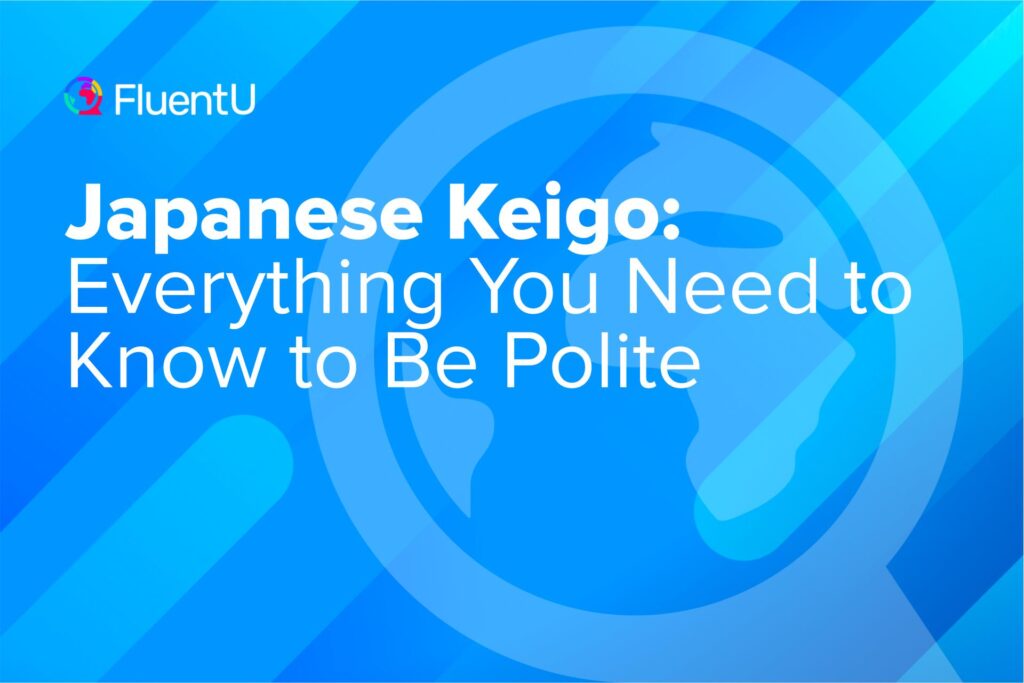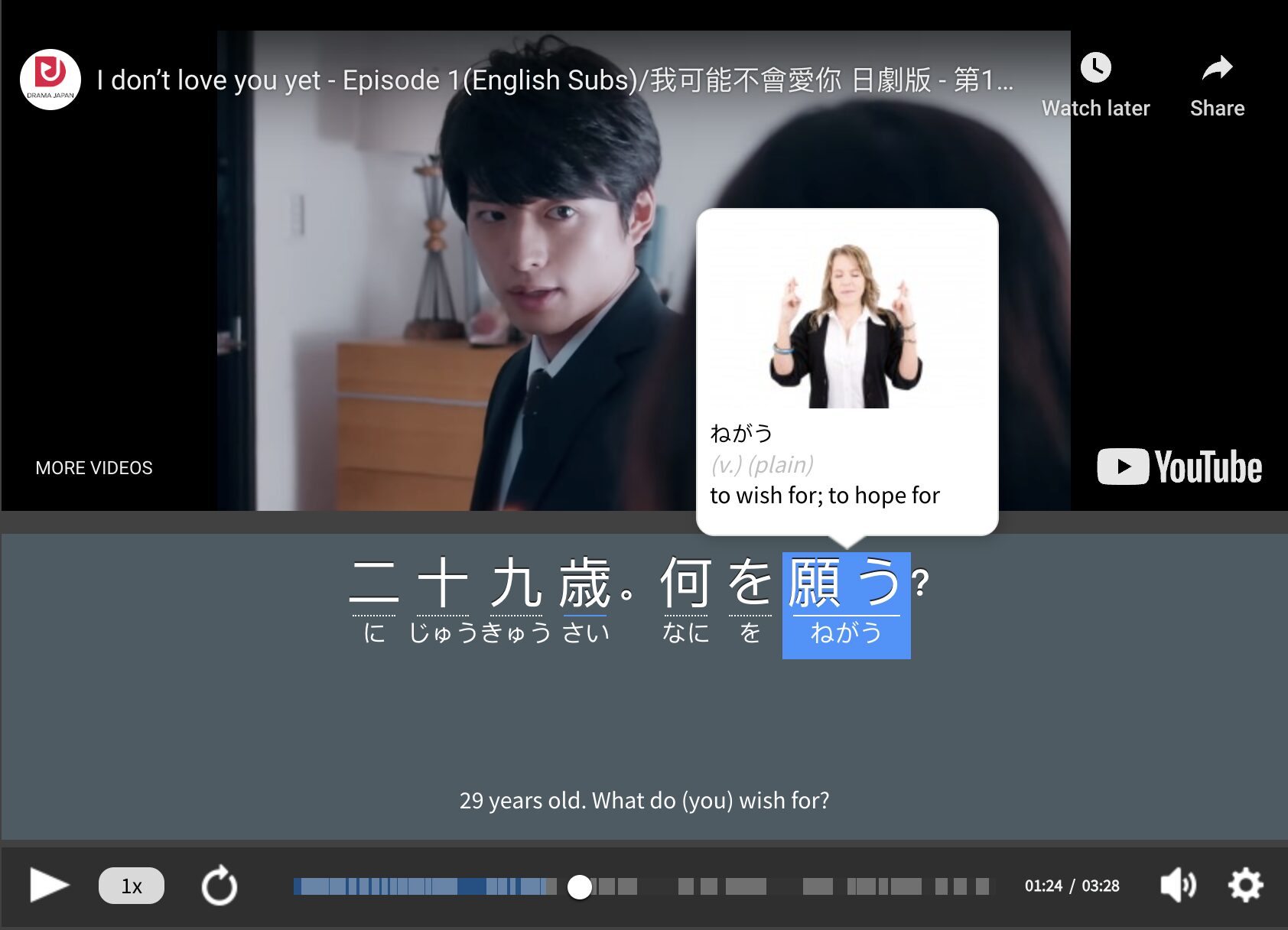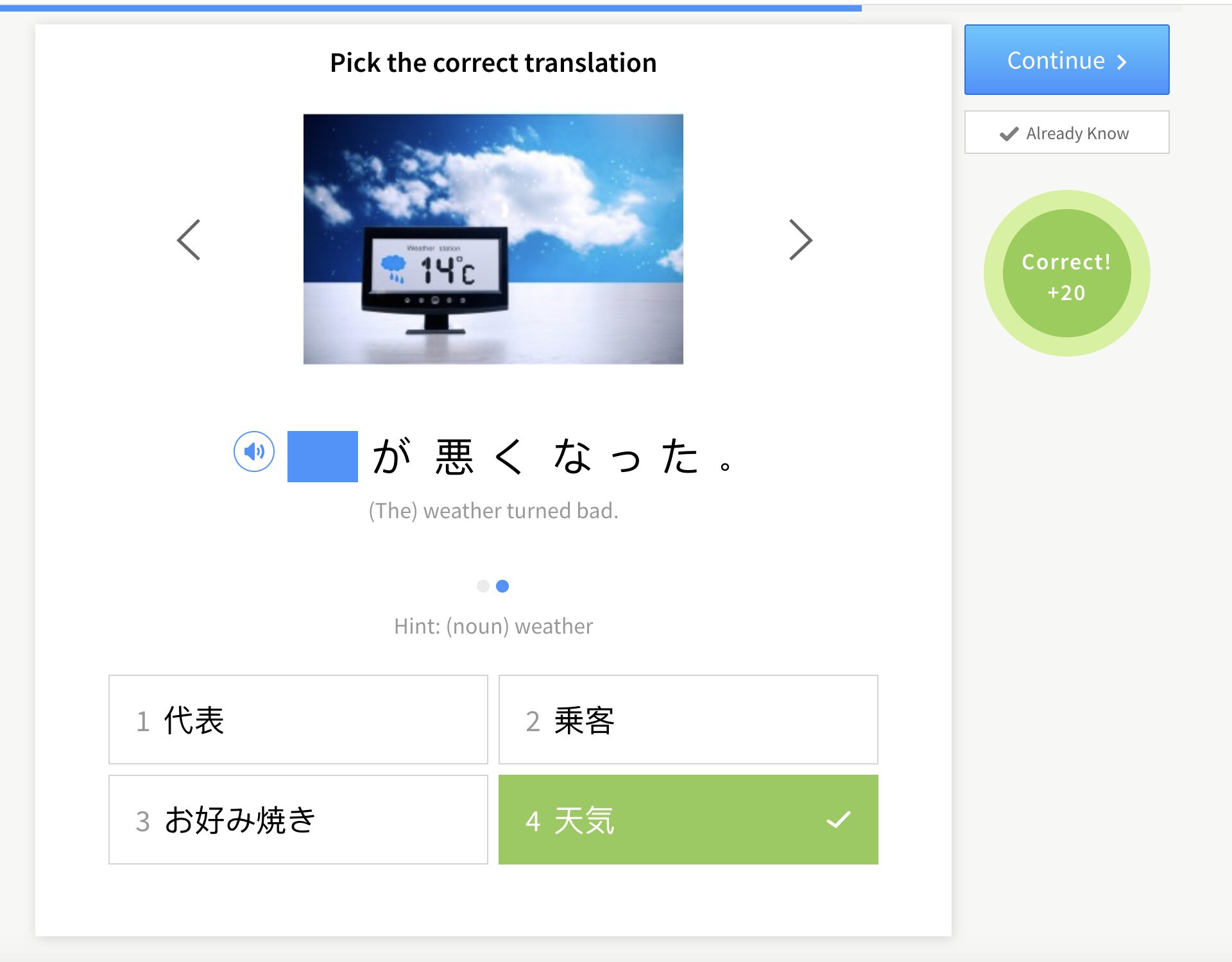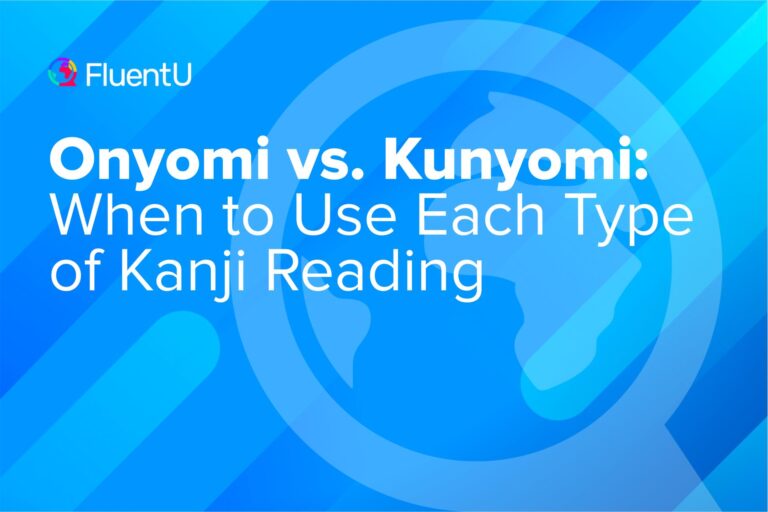Japanese Keigo: Everything You Need to Know to Be Polite

If you have studied Japanese for just one day, then you know there’s a polite way and a colloquial way to say almost everything.
But when you visit Japan, you can’t understand what the cashier is saying. The announcements on the train include words you’ve never heard before.
The type of speech they’re using is all called keigo, 敬語 (けいご), and this post will teach you everything you need to know about this super-polite, respectful way of speaking.
Download: This blog post is available as a convenient and portable PDF that you can take anywhere. Click here to get a copy. (Download)
What’s Japanese Keigo?
敬語 is a super polite form of Japanese used to either convey humility or respect.
It’s a unique and beautiful part of the Japanese language and it gives learners insights about Japan’s culture of honor and respect. This is the kind of language you would use when talking to the Emperor, the Prime Minister or even just your girlfriend’s grandparents.
So you might think 敬語 isn’t useful. You might be thinking, “I’ll never be in a situation where I’ll use this.”
You would be wrong.
Not only is basic 敬語 used when you introduce yourself to your superiors in a company setting, or when you are addressing a client, patient or customer, it’s also something you’ll hear every day in Japan.
When you visit or live in Japan, chances are, in almost every public interaction, 敬語 will be used. Whether it’s uttered by the cashier at the restaurant when you pay for your meal or by the cash machine’s computerized voice when you withdraw money from the ATM, 敬語 is something you’ll quickly become used to.
There are two parts to 敬語: 尊敬語 (そんけいご) and 謙譲語 (けんじょうご). Plus, there are some humble and formal words that you’ll need to use within these types of speech. So, let’s get started.
1. 尊敬語 (そんけいご) — Honorific Language to Use with Others
How Is It Used?
尊敬語 is the language used to show respect to others. You conjugate verbs into 尊敬語 only when you’re talking about someone else in a higher social status than yourself (your superiors at work, people older than yourself, etc.) Because of this, you would never use 尊敬語 when talking about yourself or your close family members.
Special Cases
For some verbs, you can just replace them with a more polite word. This is very easy because you don’t have to deal with all the pesky rules of conjugations. Here’s the list of the special cases:
- To go — 行きます (いきます) — いらっしゃいます
- To come — 来ます (きます) — いらっしゃいます
- To be — います — いらっしゃいます
- To eat — 食べます (たべます) — 召し上がります (めしあがります)
- To drink — 飲みます (のみます) — 召し上がります (めしあがります)
- To see — 見ます (みます) — ご覧になります (ごらんになります)
- To say — 言います (います) — おっしゃいます
- To do — します — なさいます
- To know — 知っています (しっています) — ご存知です (ごぞんじです)
- To receive — くれます— くださいます
So if you’re asking someone, “When did you come to Japan?” the polite「いつ日本に来ましたか?」 would become 「いつ日本にいらっしゃいましたか?」in super polite 敬語. In this case, you’re elevating the person you’re speaking to by using the super polite verb which directly relates to them. Of course, don’t forget that the person you’re talking to can also use the super polite verb to elevate you.
So, as you can see, the first three on the list are easy! Whether you’re saying “to go,” “to come” or “to be,” they’re all conjugated as いらっしゃいます in 尊敬語.
Here are some other examples using 尊敬語.
At your new job, when you bring some treats to share from your home country, you’d say:
“Please go ahead and eat them.”
Regular Polite: どうぞ、食べてください。(どうぞ、たべてください。)
尊敬語: どうぞ、召し上がってください。(どうぞ、めしあがってください。)
You know the company president likes Marvel movies, so you ask:
“Did you already see the new movie?”
Regular Polite: 新しい映画をもう見ましたか?(あたらしい えいがを もう みましたか?)
尊敬語: 新しい映画をもうご覧になりましたか?(あたらしい えいがを もう ごらんに なりましたか?)
If you need to ask for directions from a shopkeeper, they will ask you:
Do you know Kyoto well?
Regular Polite: 京都を知っていますか?(きょうとを しっていますか?)
尊敬語: 京都をご存じですか?(きょうとを ごぞんじですか?)
尊敬語 Conjugations
Now, on to the verbs that don’t have special words. Like the rest of Japanese, there’s a rule for conjugating these verbs into 尊敬語. Simply say お、the ますstem of a verb and then になる.
お+ますstem+になる
Here’s an example:
読みます (よみます) —> お読みになります (およみに なります)
So when you’re nervously standing at the doorway when you have an important speech, someone might say to you:
“Please come in.”
Regular Polite: どうぞ入ってください。(どうぞはいってください。)
尊敬語: どうぞお入り (になって) ください。(どうぞ おはいり (になって) ください。)
As you can see, sometimes the になって is omitted for convenience. If you’ve ever been to a restaurant in Japan, you’ll be very familiar with the phrase, 「少々お待ちください (しょうしょう おまち ください)」, which means, “Please wait a moment.”
2. 謙譲語 (けんじょうご) — Humble Language for Yourself, Friends and Family
How Is It Used?
謙譲語 is the language used to show humility when you speak about yourself.
In this case, you’ll only use 謙譲語 when speaking about yourself or those in your “inner circle,” such as close family or friends. Of course, you would never use 謙譲語 when talking about others, especially if they’re in a higher social position than you.
Special Cases
Just like 尊敬語, 謙譲語 has special cases in which the whole verb is replaced by a more polite version.
- To go — 行きます (いきます) — 参ります (まいります)
- To come — 来ます (きます) — 参ります (まいります)
- To be — います — おります
- To eat — 食べます (たべます) — 頂きます (いただきます)
- To drink — 飲みます (のみます) — 頂きます (いただきます)
- To hear — 聞きます (ききます) — 伺います (うかがいます)
- To see — 見ます (みます) — 拝見します (はいけんします)
- To meet — 会います (あいます) — お目にかかります (おめにかかります)
- To say — 言います (います) — 申します (もうします)
- To do — します — いたします
- To know — 知っています (しっています) — 存じております (ぞんじております)
- To give — あげます — 差し上げます (さしあげます)
- To receive — もらいます — 頂きます (いただきます)
So if you’re at a business conference and a potential employer asks you when you came to Japan, you would answer:
“I came in March of this year.”
Regular Polite: 今年の3月に来ました。(ことしの さんがつに きました。)
謙譲語: 今年の3月に参りました。(ことしの さんがつに まいりました。)
If you’re introducing yourself to your new coworkers:
“I am John Smith.”
Regular Polite: 私はジョン・スミスです。(わたしは じょん・すみす です。)
謙譲語: 私はジョン・スミスと申します。(わたしは じょん・すみす と もうします。)
When you tell your boss that you saw a famous photographer’s photo at an exhibition:
“I saw that picture.”
Regular Polite: 私はあの写真を見ました。(わたしは あの しゃしんをみました。)
謙譲語: 私はあの写真を拝見しました。(私は あの しゃしんを はいけんしました。)
As you can see, in all of these situations you’re talking about yourself in regards to a person who’s higher than you in social status. Therefore, you humble yourself by using the 謙譲語 verbs.
謙譲語 Conjugations
Just like 尊敬語, you can also conjugate other verbs using a simple rule. For 謙譲語 the rule is:
お+ますstem+する
Here’s an example:
持ちます—> お持ちします
If you have a lot of bags at a hotel, a bellhop would ask you this:
“May I carry your bags for you?”
Regular Polite: 荷物を持ちましょうか?(にもつを もちましょうか?)
謙譲語: 荷物をお持ちしましょうか?(にもつを おもちしましょうか?)
When you’re asking a guest professor to help you understand a concept from his lecture:
“I would like you to teach me a little about this…”
Regular Polite: これについてちょっと教えてもらいたいんですが...(これについて ちょっと おしえて もらいたいんですが...)
謙譲語: これについて少々教えて頂きたいのですが...(これについて しょうしょう おしえて いただきたいのですが...)
3. 丁寧語 (ていねいご) — Formal Language
How Is It Used?
These are polite words for formal Japanese situations.
丁寧語 is the Japanese word that covers the concept of being polite. Not only are the verbs changed, but when you speak in 敬語, nouns and other parts of speech are sometimes also changed to become more polite. There are two ways of doing this. The first is just replacing the entire word. Here are some examples:
- Good — いい — よろしい
- A little — ちょっと — 少々 (しょうしょう)
- Person — 人 (ひと) — 方 (かた)
- Today — 今日 (きょう) — 本日 (ほんじつ)
- I apologize — ごめんなさい — 申し訳ありません (もうしわけありません)
- Soon — すぐ — 間もなく (まもなく), ただいま
- *Copula — です — でございます
“Is now a good time?” If you need to ask your busy boss a question:
今、よろしいですか?(いま、よろしいですか?)
You might see this sign on a shop that’s closed:
“We are sorry, today we are closed.”
申し訳ありませんが、本日はお休みします。(もうしわけありませんが、ほんじつは おやすみします。)
Honorific お~ and ご~ Used with Nouns
The second way to modify nouns to make them more polite is to simply add お~ or ご~ to the beginning of the noun. For example:
- Tea — 茶 (ちゃ) — お茶 (おちゃ)
- Customer — 客 (きゃく) — お客様 (おきゃくさま)
- Information — 案内 (あんない) — ご案内 (ごあんない)
- Chopsticks — 箸 (はし) — お箸 (おはし)
- Question — 質問 (しつもん) — ご質問 (ごしつもん)
- To transfer (trains) — 乗りかえ (のりかえ) — お乗りかえ (おのりかえ)
To hear these formal words in action, I would suggest trying out FluentU, which is a language learning program that uses Japanese videos to teach the language.
FluentU takes authentic videos—like music videos, movie trailers, news and inspiring talks—and turns them into personalized language learning lessons.
You can try FluentU for free for 2 weeks. Check out the website or download the iOS app or Android app.
P.S. Click here to take advantage of our current sale! (Expires at the end of this month.)

Make custom flashcards and take quizzes afterward to see if you’ve memorized.
Japanese Keigo Train Announcements Quiz
Now that you’ve learned the basics of 敬語, let’s see if you can figure out these common 敬語 sentences that can be heard on trains every day in Japan. Be sure to scroll down to cover up the answers.
- まもなく京都、京都駅に到着いたします。(まもなくきょうと、きょうとえきに とうちゃくいたします。)
- この電車のお手洗いは2号車にございます。(このでんしゃのおてあらいは にごうしゃにございます。)
- お弁当、サンドイッチ、お飲み物などをご用意して、係員がお席まで伺います。(おべんとう、さんどいっち、おのみものなどを ごよういして、かかりいんが おせきまでうかがいます。)
(1. Soon, the train will arrive in Kyoto, Kyoto station. 2. The restroom is in car number 2 on this train. 3. Boxed meals, sandwiches and beverages are available. The salesperson will come by your seat.)
Mistakes to Avoid with Japanese Keigo
In Japanese keigo, it’s crucial to steer clear of common pitfalls to convey respect appropriately.
Firstly, failing to differentiate between 尊敬語 (そんけいご) (respectful language for others) and 謙譲語 (けんじょうご) (humble language for yourself, friends and family) can lead to confusion.
On the other side of the issue, inappropriate honorifics for a given situation can come off as insincere or even rude, because it may be taken sarcastically.
Secondly, overusing keigo can create a social barrier, making communication overly formal and distant. Striking a balance between polite language and natural conversation is the key to using keigo effectively.
Additionally, neglecting the context and relationship with the person you’re addressing may lead to inappropriate language choices. It’s essential to consider factors like age, status and familiarity when choosing the formality of your Japanese.
Avoiding overly complex expressions and opting for simpler, more straightforward keigo can help to prevent miscommunication and social errors.
Lastly, not acknowledging non-verbal cues can lead to misunderstandings, because in Japan, body language often complements keigo. Non-verbal gestures like nodding and bowing are used for this.
By being mindful of these potential pitfalls, one can navigate Japanese keigo with grace and authenticity.
So there’s your complete guide to Japanese keigo. It sounds complex at first, but with just a little practice and good ear, you’ll have it down in no time.
Keep practicing this important Japanese lesson, and use it the next chance you get!
Download: This blog post is available as a convenient and portable PDF that you can take anywhere. Click here to get a copy. (Download)
And One More Thing...
If you want to learn Japanese with authentic materials but need a little extra support, then let me tell you about FluentU.
FluentU lets you consume the same content as native Japanese speakers, but with tools to make it easier to pick up the language while you watch. You’ll learn Japanese as it’s actually spoken by real people, unlike with other programs that use scripted content.
You can bring our learning tools directly to YouTube or Netflix with the FluentU Chrome Extension, or check out our curated video library full of clips that cover a wide range of topics, as you can see here:
FluentU brings native videos within reach with interactive subtitles. You can tap on any word to instantly see its meaning, an image, and its audio pronunciation. Click on the word for additional examples and to add it to your flaschards.
To reinforce what you've learned, you'll complete engaging exercises and see more examples of the key words from the video. FluentU keeps track of the vocab you’re learning, and gives you extra practice with words you find challenging.
Start using the FluentU website on your computer or tablet or, better yet, download the FluentU app from the iTunes or Google Play store. Click here to take advantage of our current sale! (Expires at the end of this month.)











